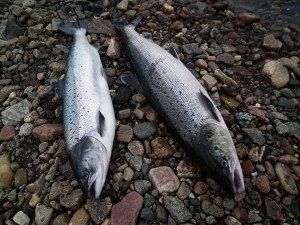Kola Lake Lapland
Kola lake Lapland in the fifteenth century had eight towns; one of them was called Kola Lake. In the local Sami language, the word Kola is translated to mean; plenty of fish.

Natural Borders.
The towns of East Lapland had well defined natural borders; they were not separated by rivers but rather by watersheds, the high ground and by the ridges. The Kola lake Lapland had two gathering groups; each of the towns had eight to twelve mature working males, often grouped together to hunt and to catch fish in the season. The combined population in the kola lake Lapland region was less than one hundred and thirty working males, according to the official tax records.
Traditional hunting.
Hunting increased in the fifteenth century, as the Sea traders got access to the White Sea. Karelian and Russian fur traders, Sweden and Denmark extended their trading, the demand for fur increased In Fennoscandia. At Kola Lake Lapland hunting game was; marten, otters, and bears. These items were highly valued, the hunting continued until early sixteenth century.
The mainstay for living was from trapping beavers, wild reindeer, and from the fish catch of trout, salmon, arctic char and pike, up until the seventeenth century.

Trading of goods.
Trading of general goods like, tobacco, hemp, butter, and other food ingredients, for the quality furs of the wild Kola lake Lapland.
Reindeer’sat the time were valued for transport, meat supply, furs, and for the antlers. The concept of herding large stocks and the reindeer husbandry had not caught on as it did later on.
Early in the eighteenth century the Kola lake Lapland reindeer population went through many lean years, as the people migration increased from the south, more reindeer were being trapped and hunted, and it could not be sustained any longer. So it brought about a fundamental change, the new concept of reindeer farming was introduced, which would protect and increase the large herds of reindeer for future.
Cultural hub.
The houses were built with timber and peat, built near the waterways, rivers and streams. Some of the populated areas were at the Naruska River, Kola Peters ridge, and on the town Ridge, west side of the Salla River. Kola Lake was historically a well-established settlement, including antiquity, a hub of the locals, and well known by the travelling nomads and goods traders from Karelia.
By the end of the eighteen century, the population of Kola Lake had increased by some twenty folds to over two thousand. As the reindeer, cattle, horses and sheep were increased in the Kola Lake Lapland, the natural predators; wolverines, wolves and bears became a problem.
Salla museum of war and reconstruction.
The Salla Museum located at the Salla railway station has a well presented local cultural history on display. Watch this YouTube video by the Lapland Guide on the Kola Lake Lapland. for more information on the history, culture and tradition of Lapland.
VIDEO.
